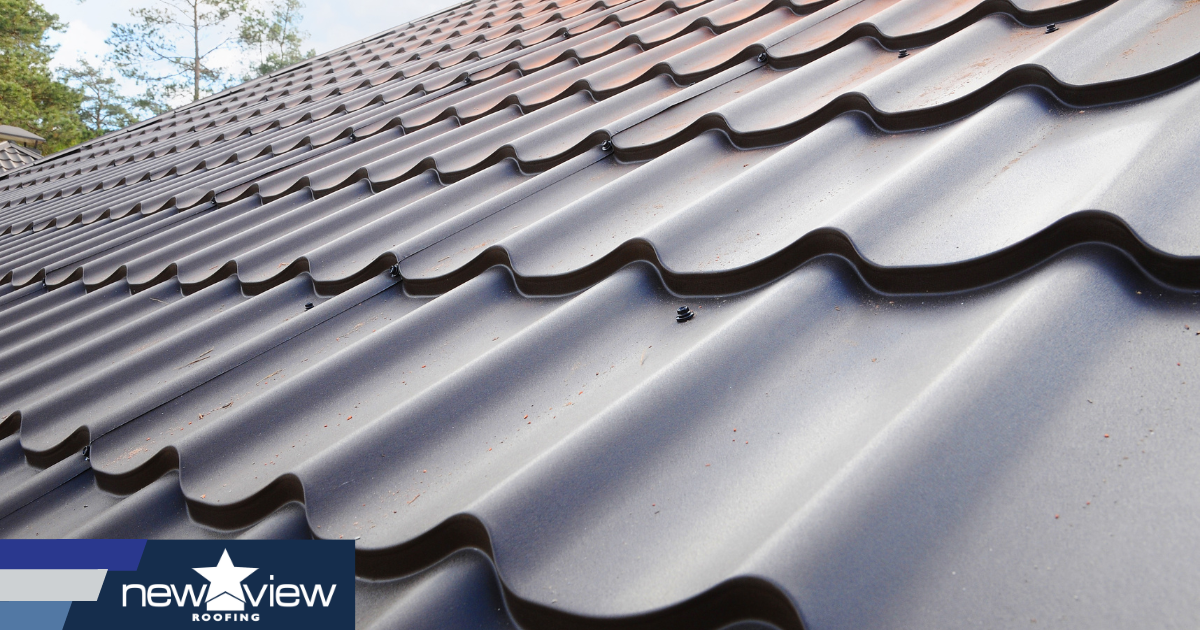Step-by-Step Guide to Locating the Right Roofing Companies in Gainesville
Step-by-Step Guide to Locating the Right Roofing Companies in Gainesville
Blog Article
Finest Practices for Ensuring Proper Roofing Air Flow
A balanced consumption and exhaust air vent proportion, typically 1:300, plays a critical function, with consumption vents ideally positioned at the lower side of the roof covering for amazing air access and exhaust vents at the top for cozy air departure. Keeping insulation away from vents is crucial to avoid air movement limitation.
Understand Ventilation Fundamentals
Appropriately comprehending air flow basics is necessary for making certain the longevity and effectiveness of roofing systems. Efficient air flow minimizes dampness accumulation and temperature extremes in the attic, both of which can result in significant architectural damages in time. A well-ventilated roofing assists in avoiding typical issues such as mold and mildew development, timber rot, and ice dams, which can jeopardize the integrity of the roofing products and the underlying structures.
The primary objective of ventilation is to promote the activity of air, permitting for a regular exchange between the interior and exterior atmospheres. This equilibrium is achieved via a combination of consumption and exhaust vents that collaborate to maintain optimum airflow. Intake vents, usually situated along the soffits or eaves, allow fresh air to get in the attic room area, while exhaust vents, typically situated at or near the roofing system ridge, make it possible for warm, moist air to get away.
Trick variables influencing the efficiency of roofing air flow include appropriate placement, adequate sizing, and ensuring that both consumption and exhaust vents are unblocked. Normal evaluation and upkeep are crucial to recognize prospective blockages, damage, or inadequacies in the air flow system, thus protecting the roof covering's efficiency and durability.
Kinds Of Roofing Vents
Roofing system vents play a crucial duty in preserving reliable attic room air flow and, by expansion, the general health and wellness of the roof covering system. Various kinds of roofing vents are available, each with special benefits customized to particular roof requirements. Ridge vents, for example, are installed along the roof covering's optimal, allowing warm, moist air to leave from the attic. They provide constant ventilation and blend effortlessly with the roofline, making them both effective and cosmetically pleasing.

Soffit vents are installed under the eaves and operate in tandem with roof covering vents to guarantee a well balanced consumption and exhaust system. By allowing cooler air to enter from below, soffit vents help with the expulsion of hot air via top vents. Gable vents, situated on the outside wall surfaces of the attic room, offer an additional efficient service, specifically in homes with gable roof coverings.
Evaluate Your Present Ventilation

Following, think about the age and condition of your roofing products and ventilation components. Older systems might not abide look these up by existing building ordinance or might have deteriorated with time, minimizing their efficiency. Conduct an extensive exam to recognize any type of indicators of damage, such as rust, damage, or spaces that can jeopardize the system's efficiency.
Furthermore, gauge the attic room temperature level and humidity levels. Heats and humidity can suggest poor air flow - roofing companies. Use a hygrometer and thermostat to obtain exact analyses, contrasting them with outdoor conditions. Persistent inconsistencies recommend potential concerns that require resolving.
Setup Best Practices
Efficient installment of roof covering air flow systems is critical for ensuring ideal efficiency and longevity. Correct setup starts with understanding the certain air flow demands of the roofing and the building it covers. This includes determining the correct ratio of intake to exhaust vents, usually sticking to the 1:300 policy, which stipulates one square foot of ventilation for each 300 square feet of attic room flooring room.
Intake vents must be mounted at the roofing's lower edge, frequently in the soffits, to permit trendy air to get in. Exhaust vents, on the various other hand, ought to be set up near or at the roof covering's top to promote the exit of cozy, damp air.
Seal all air vent links carefully to avoid air leakages and possible water infiltration. Usage top notch products and adhere to producer standards to ensure resilience and performance. In addition, integrating ridge vents with baffles Related Site can considerably boost air movement efficiency by avoiding wind-driven rainfall and snow from getting in the attic room.
Ultimately, specific setup of roof covering air flow systems minimizes potential issues such as mold and mildew development, ice dams, and structural damage, ensuring the roofing's integrity and the structure's total health and wellness.
Regular Upkeep Tips
Uniformity in maintenance techniques is basic to ensuring the long-lasting efficiency of roofing ventilation systems. Routine evaluations are vital, preferably done biannually-- in the spring and autumn. During these assessments, ensure that vents are totally free of debris, nests, and various other obstructions that can restrain air movement. Inspect for any type of signs of moisture accumulation or mold, as these can show inappropriate ventilation or leaks (roofing companies).
Utilize a soft brush or a vacuum cleaner to get rid of dirt and debris from consumption and exhaust vents. Be careful not to damage the air vent displays or louvers throughout the process.
Proper insulation is just as essential. Ensure that attic insulation does not block the vents, as this can severely restrict airflow. Reposition or replace it to maintain an efficient barrier. if any type of insulation has actually shifted or cleared up.
Last but not least, replace any type of damaged or missing parts quickly. Broken vents, broken shingles, or worn-out blinking can all add to poor ventilation and needs to be resolved right away. Normal upkeep guarantees that the roof ventilation system operates ideally, consequently extending the life-span of the roof covering itself.
Conclusion
Ensuring proper roofing ventilation is vital for keeping the performance and resilience of a roof system. Adherence to the 1:300 intake and exhaust vent ratio, paired with the calculated positioning of vents, is crucial.
A balanced consumption and exhaust vent ratio, generally 1:300, plays a pivotal function, with intake vents Go Here ideally placed at the lower edge of the roofing for cool air entry and exhaust vents at the height for warm air departure. Consumption vents, generally located along the eaves or soffits, permit fresh air to go into the attic room room, while exhaust vents, frequently positioned at or near the roof covering ridge, enable hot, damp air to leave.
Soffit vents are set up under the eaves and work in tandem with roofing vents to ensure a balanced consumption and exhaust system. By enabling cooler air to get in from below, soffit vents promote the expulsion of hot air through top vents. Adherence to the 1:300 consumption and exhaust air vent proportion, coupled with the calculated placement of vents, is crucial.
Report this page